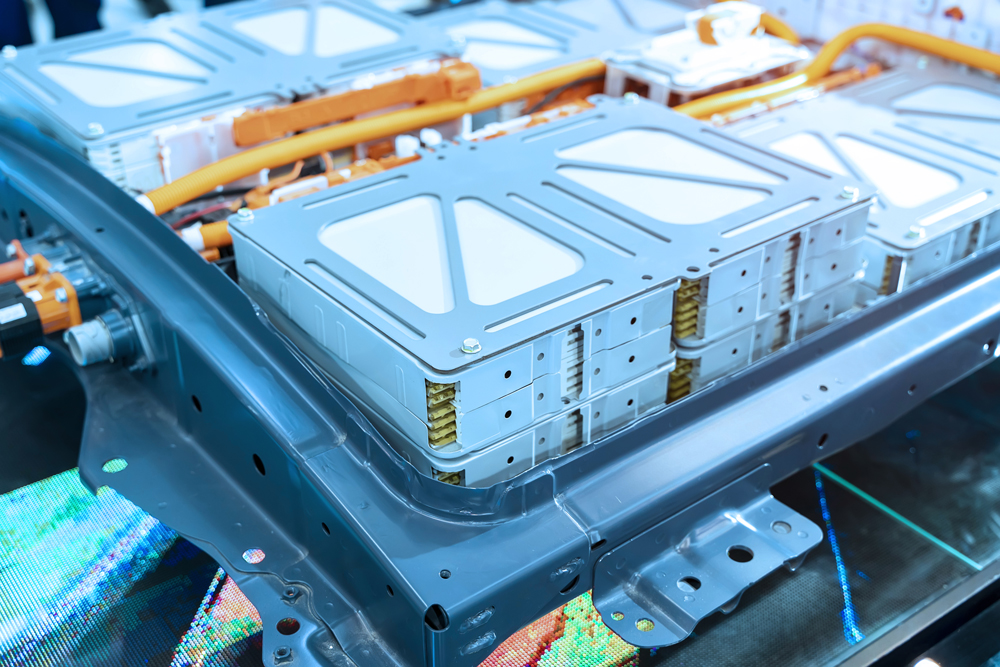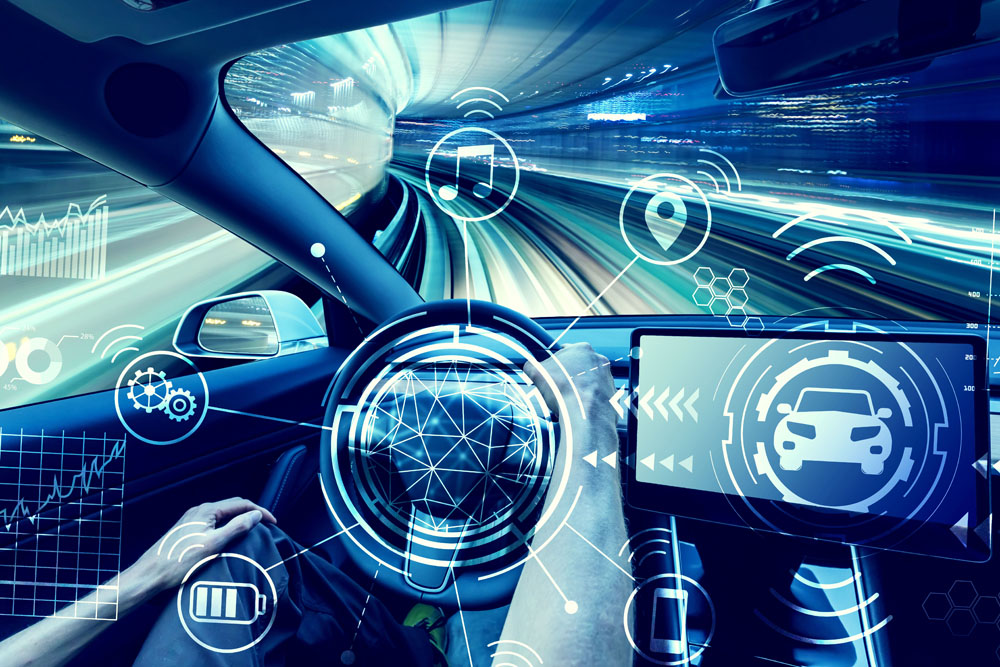Electric Vehicles: Seeing the Big Picture

Powering the electric vehicle segment will need concerted effort from all stakeholders to make it truly safe, secure and sustainable.
There is no denying the power of an electric vehicle as it zaps its way through the traditional Automotive industry, changing our perceptions of what a car should be, and revive how we get from point A to point B.
Amidst the global conversation about our carbon footprint and dangerous emissions, the black smoke belching vehicles of the past are long due a massive overhaul. To be sure, every major automotive player is coming on board – from BMW to Nissan, Mercedes to Ford – leaving no company out of the race towards electric vehicles (EVs).
Tesla, possibly now the world’s most valuable and talked-about company, saw sales of its first plug-in EV, the 2013 Model S, soar from 2,500 units in 2014 to over 10,000 in 2015. And in 2020, it delivered over 5,00,000 of its vehicles, translating to 16 percent of the global market share and becoming the world’s largest provider of fully electric plug-in light vehicles.
Tesla’s meteoric success further proves that the hunger for EVs is indeed growing, and it is no exception in India.

As the world’s second most populous place on earth, with a domestic consumer market that dwarfs all nations, India offers the world’s biggest untapped prospects for EVs with a market valued at $5 billion. This is expected to reach $47 billion by 2026, registering a CAGR of above 44 percent between 2020-2027 with the annual sales expected to reach 6.34 million units. In parallel, the annual demand for batteries is expected to grow by 32 percent by 2027, of which as much as 80 percent of it will be on lithium-ion batteries to a value of $14.9 billion.
India getting EV-ready
Various reports suggest that the only way for India’s EV market is up. The southwestern state of Kerala, for example, aims to put one million EV units on the road by 2022 and 6,000 e-buses in public transport by 2025. Meanwhile, the southern state of Telangana aims to have EV sales achieve 80 percent for two- and three-wheelers such as motorcycles, scooters and auto-rickshaws; 70 percent commercial cars which include ride-hailing companies such as Ola and Uber; 40 percent buses; 30 percent private cars; and an overall 15 percent electrification of all vehicles by this same period. Experiments with e-mobility for public transport have also led to the deployment of electric intercity buses across several other major cities.
While data from the Society of Manufacturers of Electric Vehicles (SMEV) indicate that 2021 EV sales in India is down by 20 percent, this has been attributed largely to the pandemic.
Still, the momentum is growing. In February 2021, Ather Energy, India’s first intelligent EV manufacturer, moved its $86.5 million factory from Bengaluru to Hosur. Ather Energy’s factory is said to have an annual production capacity of over 1,00,000 electric two-wheelers, up from its previous capacity of 25,000.

Furthermore, Ola Electric, the subsidiary of Indian ride-hailing start-up, Ola, also announced that it would be setting up the world’s largest electric scooter plant in Hosur at a cost of $330 million. It aims to produce two million units a year, and in fact, by the next year, wants to scale up production to 10 million vehicles a year or 15 percent of the world’s total number of e-scooters.
The uptake has also been bolstered by Government initiatives such as the Faster Adoption and Manufacturing of (Hybrid &) Electric vehicles (FAME), and more players are joining the market mix.
What will it take then to truly electrify this segment and charge it to the next level? How can all stakeholders – be it manufacturers or engineers, investors or sellers – come together to make EVs the future?
India offers the world’s biggest untapped prospects for EVs with a market valued at $5 billion.
This is expected to reach $47 billion by 2026, registering a CAGR of above
44 percent between 2020-2027 with the annual sales expected to reach 6.34 million units.
Putting the EV puzzle together
 To be sure, there are concerns about safety, security, and sustainability. Many well-documented barriers to EV adoption remain, ranging from technology cost to infrastructure buildout to consumer behavior. Are there enough charging stations, for example, and is the production of lithium-ion batteries ramping up to match the manufacturing of EVs?
To be sure, there are concerns about safety, security, and sustainability. Many well-documented barriers to EV adoption remain, ranging from technology cost to infrastructure buildout to consumer behavior. Are there enough charging stations, for example, and is the production of lithium-ion batteries ramping up to match the manufacturing of EVs?
The supercharging of EVs is akin to a jigsaw puzzle where every piece must be placed perfectly for the whole picture to come together.
The first puzzle piece is most certainly a policy environment in which EV players can thrive, and in which EVs are encouraged as a transformation of the traditional internal combustion engine (ICE) cars.
There is every expectation that the policy environment will become more favorable. Over the years, we have already seen a lot of commitment from the Government without which any initiative on EVs would not pick up.
The second jigsaw piece is sustainable manufacturing of EV batteries. India is likely to become a leading hub for manufacturing EVs and EV components. The Government has rolled out a Production-Linked Incentive Scheme (PLI) for ACC Battery Storage Manufacturing. This will go a long way to spur domestic production of batteries and reduce dependence on imports. It aims to support the growing EV industry with the required infrastructure and will significantly cause a reduction in the cost of EVs. Many leading battery producers like Amara Raja Batteries are orienting new investments into green technologies including lithium-ion batteries.
Still, the challenge is going to be in the natural resources required to make lithium-ion batteries, such as nickel, cobalt, lithium and graphite. India is not home to such materials. Hence, most of them must be imported. As such, good policies for robust collaboration with the nations that produce these materials is crucial. We have also seen that globally the reserves are good enough to address the demand for these kinds of materials.
At the same time, to be sure, the mining of the rare earth materials used in batteries pose a risk to sustainability. Lithium production, for example, is of environmental concern as the demand for batteries soars. Australia and South America, in particular, what some call the ‘lithium triangle’ of Argentina, Chile and Bolivia, currently dominate 80-90 percent of lithium production.
Charging stations have also been on the upward trajectory. In January 2020, the Department of
Heavy Industries (DHI) of India approved over 2,500 electric vehicle charging stations nationwide
under the second phase of the FAME program in order to continue promoting e-mobility.
It is not without its controversies: indigenous people in the ‘lithium triangle’ worry that the high levels of water needed to produce lithium, which can reach as much as half a million gallons per tonne, could put immense pressure on their already-scarce water supply. These concerns have triggered protests against the exploitation of the resources by large companies.
However, we believe that technology will go a long way towards addressing these concerns. Canadian-based MGX Minerals, for example, is working to find accessible and underutilized lithium stores. Since 2016, the company has been testing a nano-filtration system that uses a set of highly specialized membranes to passively sift lithium from wastewater, which increases returns at a much-reduced time.


Cost is also a barrier to many consumers. The initial cost to own an EV, without a doubt, is much higher compared to ICE vehicles. There is still much to be done to bring this cost down, but for starters, policies giving tax breaks to the people who want to purchase an EV would help bring the cost down. People, too, need to be educated that in the long run, the cost of an EV is far lower than an ICE vehicle.
The good news is: according to Bloomberg New Energy Finance, global battery-making capacity could double by 2021, while lithium-ion batteries are forecasted to be up to 43 percent cheaper by that same year.
The initial cost to own an EV is much higher compared to ICE vehicles. Policies giving tax breaks to
the people who want to purchase an EV would help bring the cost down. People, too,
need to be educated that in the long run, the cost of an EV is far lower than an ICE vehicle.
 Charging infrastructure makes the next puzzle piece. Even as charging infrastructure continues to increase, range anxiety is still one of the key challenges. India is quite different from other countries. When we speak of EVs, we are not just talking about passenger vehicles, we are talking about two-wheelers, three-wheelers like auto-rickshaws, as well as commercial vehicles.
Charging infrastructure makes the next puzzle piece. Even as charging infrastructure continues to increase, range anxiety is still one of the key challenges. India is quite different from other countries. When we speak of EVs, we are not just talking about passenger vehicles, we are talking about two-wheelers, three-wheelers like auto-rickshaws, as well as commercial vehicles.
Yet, when we are faced with these challenges, we need to look for unconventional approaches; we look towards alternate methods like battery swapping or more mobile charging for example. To leapfrog technology to explore beyond the conventional charging infrastructure is the key here.
Of course, we cannot talk of EVs without considering that the move towards renewable energy is another crucial piece of the puzzle. The source of energy should not be, as it is now, from a non-renewable source. The good news, from India's policy point of view, is that there is a lot of push for this, especially the solar energy.
Undimmed potential
 Even with these issues, the light for EVs is undimmed. Globally, EV sales have risen year-on-year, seeing a slight dip largely due to the ongoing pandemic. Rapid urbanization, consumer demand, commitments by nations for net zero emissions and an undeniably strong push towards environmental sustainability are indeed the driving factors for EVs.
Even with these issues, the light for EVs is undimmed. Globally, EV sales have risen year-on-year, seeing a slight dip largely due to the ongoing pandemic. Rapid urbanization, consumer demand, commitments by nations for net zero emissions and an undeniably strong push towards environmental sustainability are indeed the driving factors for EVs.
In India, think-tanks like the NITI Aayog have pegged EV sales penetration in India at 70 percent for commercial cars, 30 percent for private cars, 40 percent for buses, and 80 percent for two- and three- wheelers by 2030.
More crucially, these targets, if achieved, could see a reduction of 14 exajoules of energy and 846 million tonne of CO2 emissions over the lifetime of the vehicle. Potentially, EVs sold from now till 2030 could save 474 million tonne of oil worth $207.33 billion over its lifetime.
As more EVs find their way onto our roads, personal recommendations and experiences
will soon overcome the concerns. Friends and families as well as the expected rise of commercial EVs,
especially in India, will further reassure consumers to make the switch.
Shift in consumer behavior
Moreover, consumer behaviors are changing quickly. The consumer demand has certainly increased. The younger generation is increasingly demanding for more sustainable solutions to transportation, and if their concerns are addressed, there is little to stop them from embracing EVs. Their growing awareness about climate change and the need for sustainability have been driving a spurt in the demand for EVs. Deloitte, in its report on EV vehicle trends, noted that from 2018 to 2020, there were some noticeable changes in consumer attitudes toward EVs.
 Concerns over the cost/price premium have diminished as fewer consumers now cite driving range as a concern. While the lack of charging infrastructure has become the top priority for most consumers, this is actually positive. It could mean that people are starting to see EVs as a realistic option and are considering the practicalities of ownership.
Concerns over the cost/price premium have diminished as fewer consumers now cite driving range as a concern. While the lack of charging infrastructure has become the top priority for most consumers, this is actually positive. It could mean that people are starting to see EVs as a realistic option and are considering the practicalities of ownership.
In its report, Deloitte expects to see some of the biggest barriers to EVs completely removed in the near future. Its report finds that EVs’ driving range is already comparable to that of ICE vehicles and price has already reached parity, taking into consideration the subsidies in various markets and the total cost of ownership, and the number of models available is increasing.
As more EVs find their way onto our roads, personal recommendations and experiences will soon overcome the concerns. Friends and families as well as the expected rise of commercial EVs, especially in India, will further reassure consumers to make the switch.
Ultimately, only when the puzzle pieces are in place are we able to see the full picture. The push towards EVs cannot be done in silos. The ecosystem for EVs needs to encompass everything from charging infrastructure to renewable energy to range concerns to cost. Only in this way, true transformation and the electrification of vehicles can be achieved and become the new normal for the future of transportation and mobility.

SRIDHAR DHARMARAJAN
Executive Vice President & Managing Director
Hexagon Manufacturing Intelligence, India
sridhar.dharmarajan@hexagon.com



 Facebook
Facebook.png) Twitter
Twitter Linkedin
Linkedin Subscribe
Subscribe